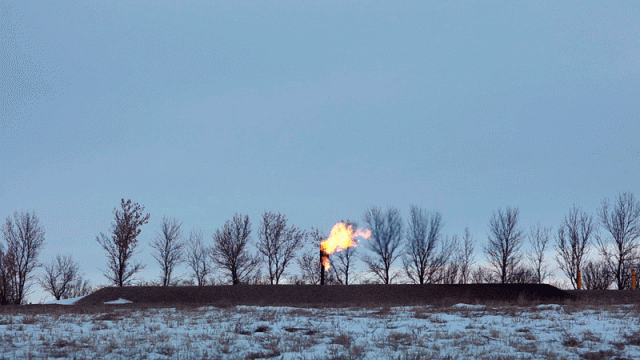EIA: Flaring In North Dakota "Has Declined Sharply"

It’s more than a little sad that while the increase in natural gas flaring in North Dakota sparked lots of headlines, both in the state and nationally, the response from the oil and gas industry and state regulators to dramatically reduce flaring has gone largely unnoticed.
Safe airplane landings aren’t news, the adage goes, but it seems to me that if the increasing in flaring was news (it was) then the reduction ought to be news too.
Yesterday the federal Energy Information Administration published a report on flaring in North Dakota and found that “has declined sharply” since 2014:

The volume of North Dakota’s natural gas production that is flared has fallen sharply in both absolute and percentage terms since 2014. In March 2016, 10% of North Dakota’s total natural gas production was flared, less than one-third of the January 2014 flaring rate, which was at 36%.
And no, this reduction in flaring hasn’t occurred because of the decline in oil drilling in the state. The industry has reduced flaring even as gad production has increased. “Flaring rates and volumes have significantly decreased as North Dakota’s total natural gas production has continued to grow, setting a monthly total natural gas production record of 1.71 billion cubic feet per day in March 2016,” the EIA reports.
Just to make that point clear, flaring has gone down in North Dakota even as gas production has risen to record highs. Thus the reduction in flaring isn’t merely happenstance but rather the result of concerted work and investment by state regulators and the industry.
Some will never give the state or the industry credit for this reduction, mostly because their politics dictate the presumption that the oil industry is always evil, but credit is due none the less.
And more reductions in flaring, both as a percentage and in absolute volume, are likely ahead. In September 2015 the North Dakota Industrial Commission set new guidelines for flaring reductions. As you can see, with flaring already down to 10 percent, the oil and gas industry is head of schedule.

There is no reason at all why the progress in flaring reductions cannot continue their downward trend.
I’m sure if there is some setback causing flaring rates to increase again – some delay in infrastructure build-out, perhaps, or a shutdown at a gas processing plant – the activists and the journalists who listen to them will sound the alarms. Barring that, though, this problem will likely cease to exist in the not-so-distant future largely out of the public’s eye.




